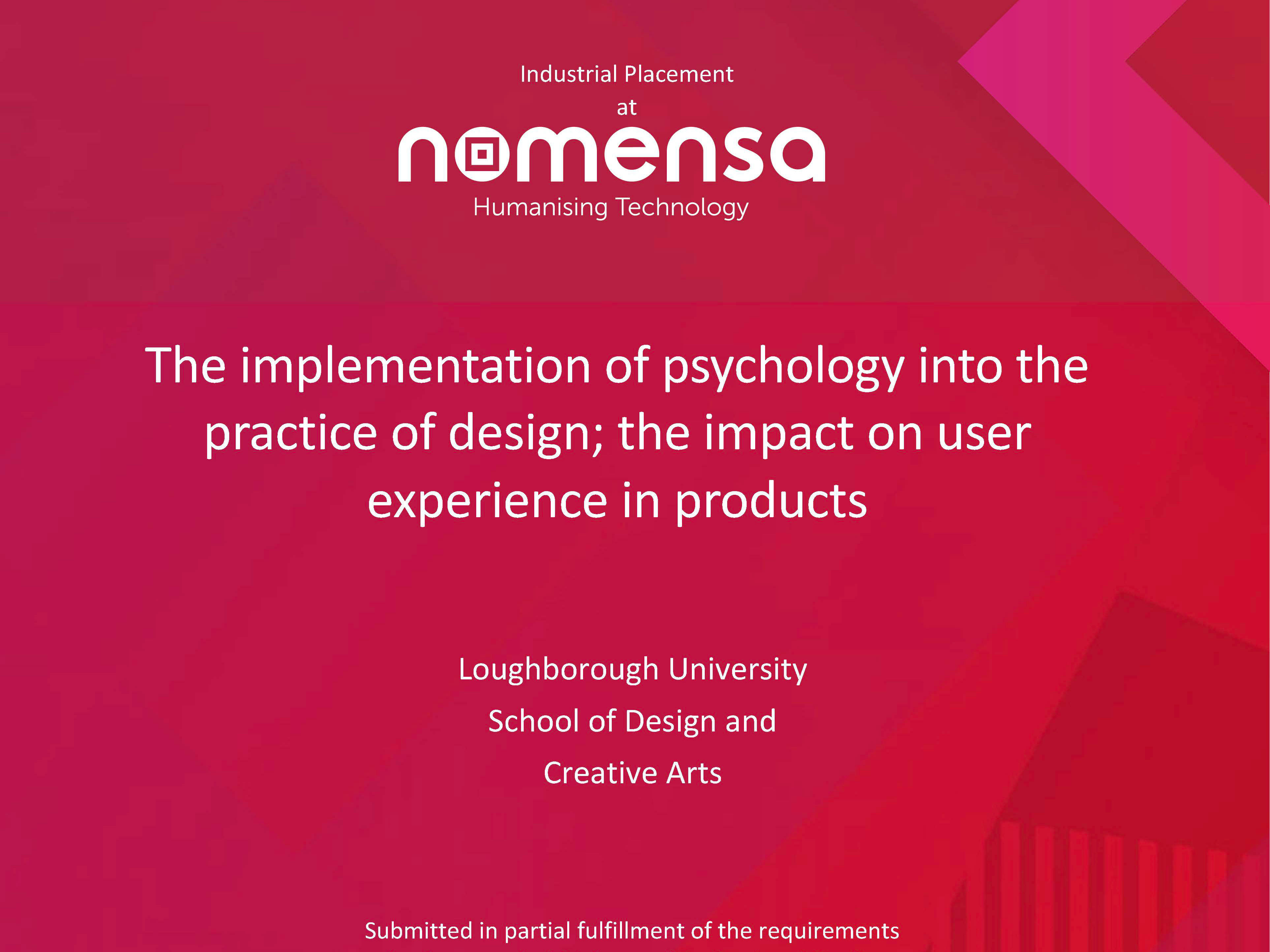Health & Well-being
Worldwide approximately 350 million people suffer from Depression and even more people suffer from low mood.
Limbic focuses on intervention opportunities to help people cope with mental health issues in line with methods of cognitive behavioural therapy. This design meets an opportunity within the aromatherapy market to innovate in creating a product that purposefully tackles mental health through routines and the context of mindfulness, interlinking these practices with scents to stimulate cognitive association.
Limbic - An Aromatherapy based, IoT mindfulness tool
Discovering Key Insights
Whilst a minimal amount of studies have been conducted into the clinical impact of aromatherapy, one of the studies showed that the use of aromatherapy had the same impact as Lorazepam, a medication for anxiety. Aromatherapy is being commonly used as an aide to medical treatments and assist people who struggle with mental health.
CBD oils have also had some clinical trials which concluded in their beneficial impact on depression.
Emphasising with User Groups
Numerous investigations were conducted into complimentive assistive medicine (CAM) scenarios and how the use of scent might impact each individual user group’s experience of living with a mental impairment.
Females with depression at university became a clear relevant user group but regardless of gender the product development took direction to be inclusive to all genders based upon the insight regarding a difficulty in men expressing their emotional state
By creating a empathy map I explore the particular effect on Low mood & Depression and was able to pinpoint moments of difficulty and hardship and identify opportunities to intervene causing the product to evolve from an aromatherapy product to a mindfulness trainer which would include a symbiotic breathing exercise with the implementation of scents.
Concept generation
Mindfulness is a skill that takes time to develop. It is not easy, and like any skill it requires a certain level of effort, time, patience, and ongoing practice. Mindfulness can be taught in a number of ways. Meditation is one of the key techniques used in mindfulness training, but not the only technique.
I want to innovate beyond a traditional aromatherapy product and instead develop this product into a mindfulness trainer which makes the product more accessible to people struggling with Anxiety, Depression, Panic, Self-compassion, Sleep, social anxiety, tolerating distress, worry and rumination. To help users cope with these mental strains they are often encouraged to practice mindfulness and this can be difficult for some, therefore the product has a real opportunity to develop a innovative system to improve how people live with symptoms of these mental health afflicts.
My product function revolves around the release of different scents. The first main product functionality is to create a symbiotic breathing experience across the product eco system. The second feature of functionality within this context with using the trainer within a yoga practice.
Design Proposition
The design of the product aims to evoke feelings of calmness in the user due to the natural and organic form and lines. In addition, I wanted to reference sculpture within the shape and used difference pieces of marble subtractive sculpture to influence the development of the form. In keeping with the organic nature, I used transparent plastic at the top of the product. Allowing the user to view the internal components in ode to essential organic design. Combined with the reflective use of colour in the white and the blue, the overall aesthetic was found by users to feel calming which means the form and functionality of the product complement each other in creating an immersive experience for the user.
The product features an SOS interaction where the user applies force onto the silicone oval which covers a force sensing resistor. When pressure is applied this begins a breathing exercise (predetermined in settings and editable for the user to alter to their preferences). The user with their phone or smart watch and the product follows the breathing routine, inhaling - holding the breath - exhaling, to assist them in a moment where they might feel anxious or stressed to help them control any negative emotions and to calm themselves no matter where they might be.
Evaluation and User Research
Creation of prototypes such as 3D printed form to self evaluate physical ergonomics to determine placement for seamless interactions that help users quickly initiate the SOS breathing sequence. In addition I planned evaluation methods surrounding the importance of understanding the cognitive ergonomics of the product which involved documenting discussion guides and questionnaire plans to explore designing for emotion, behaviour change, impact of aesthetics upon different genders.

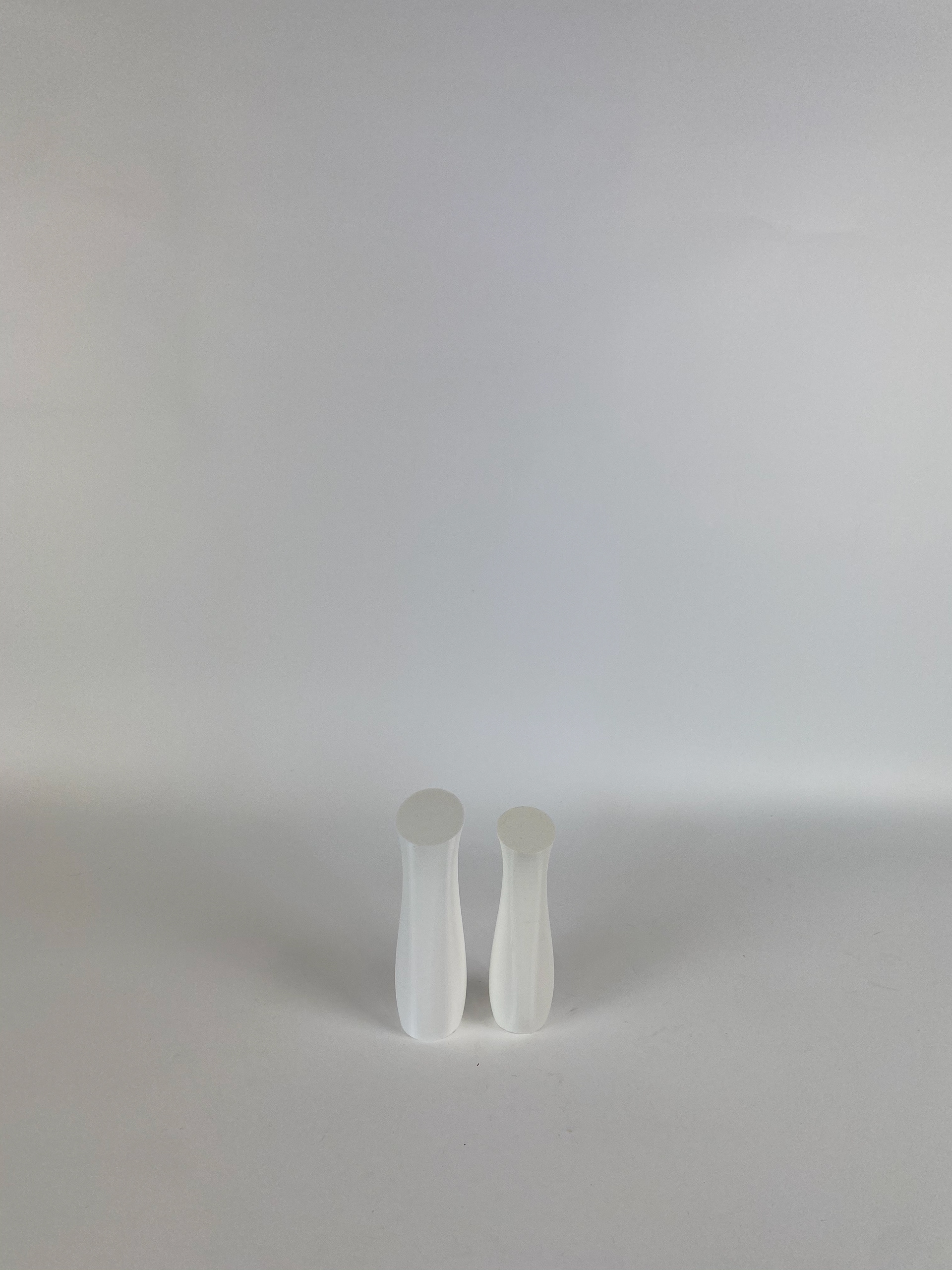
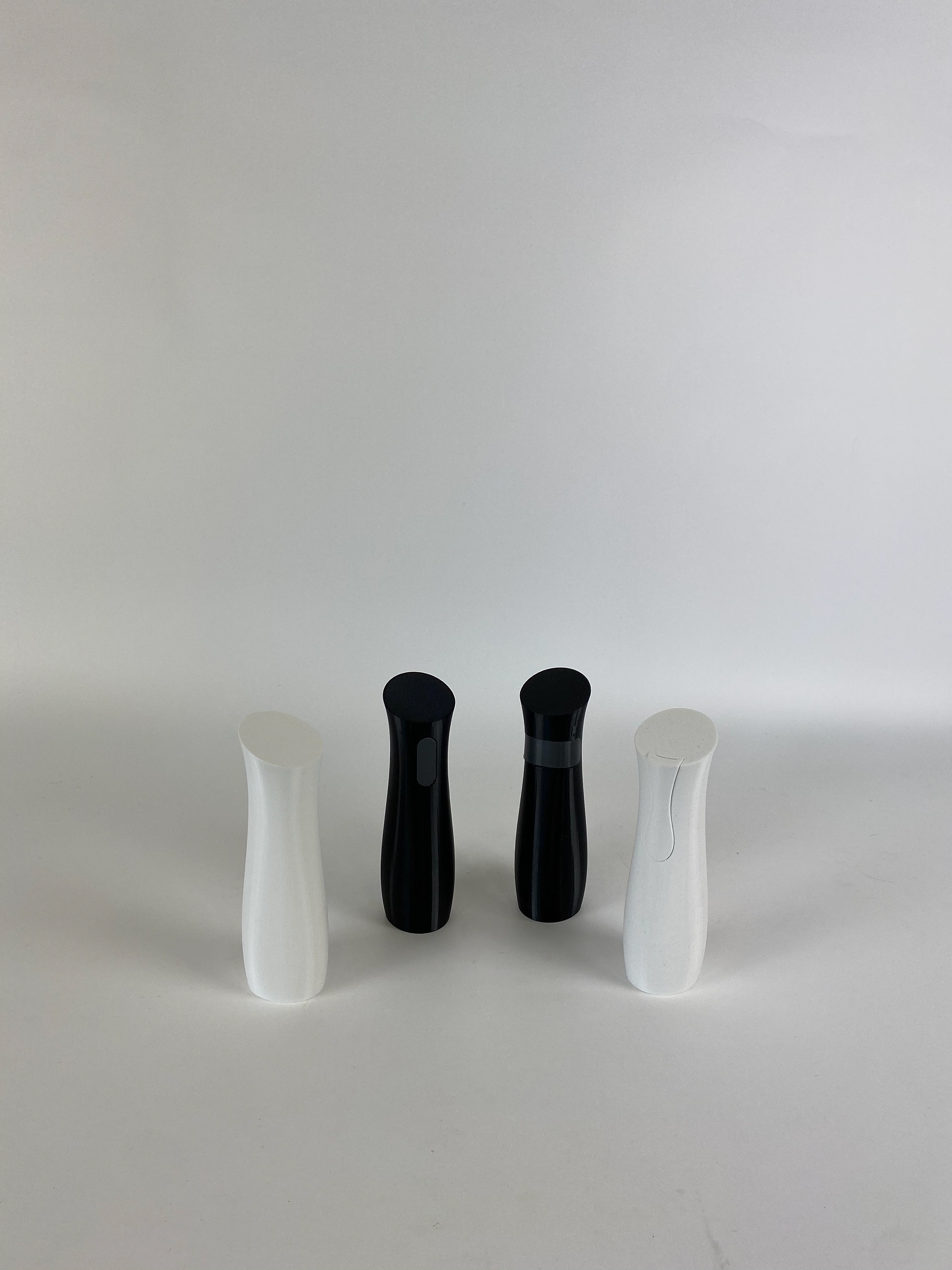
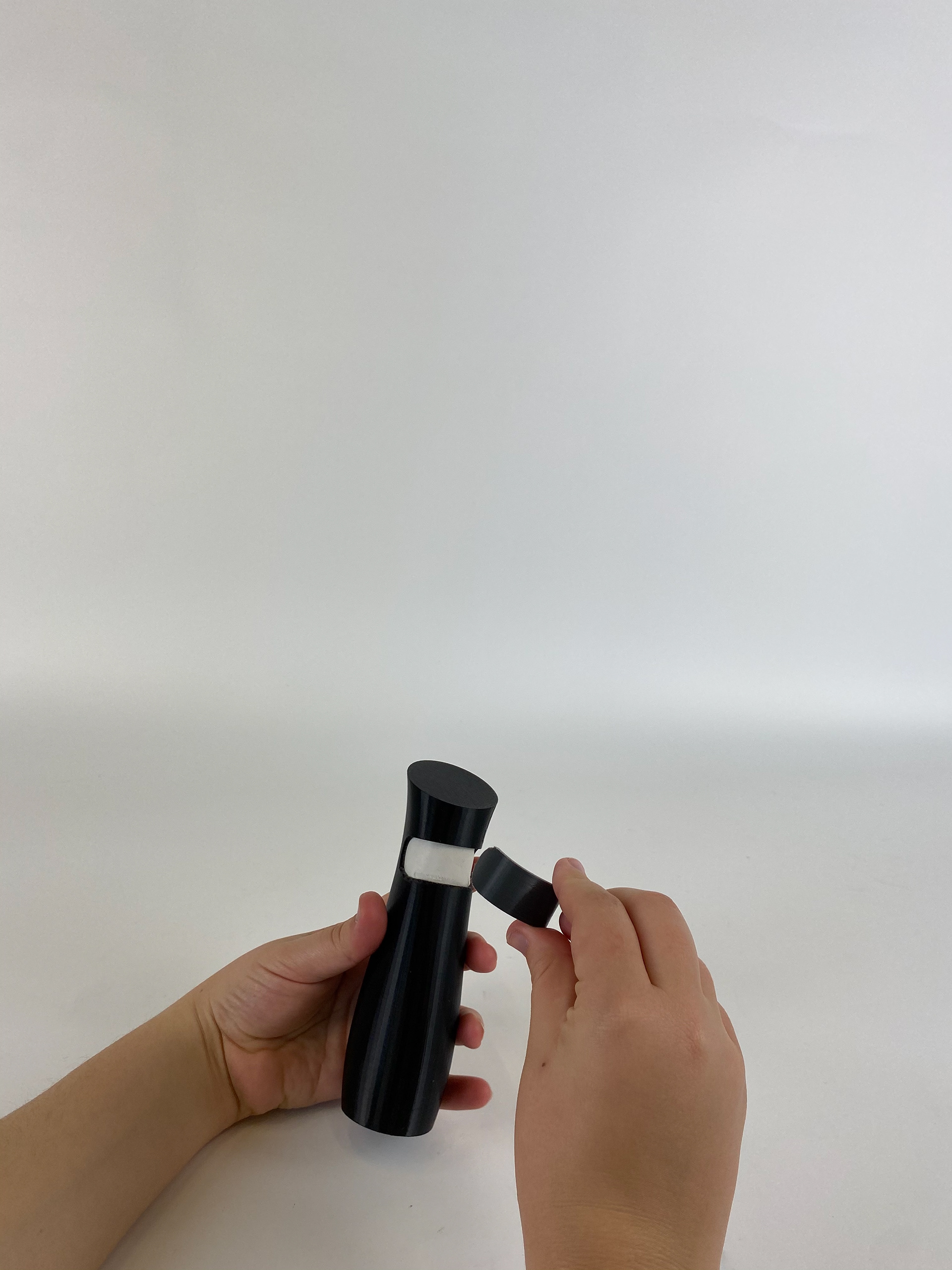
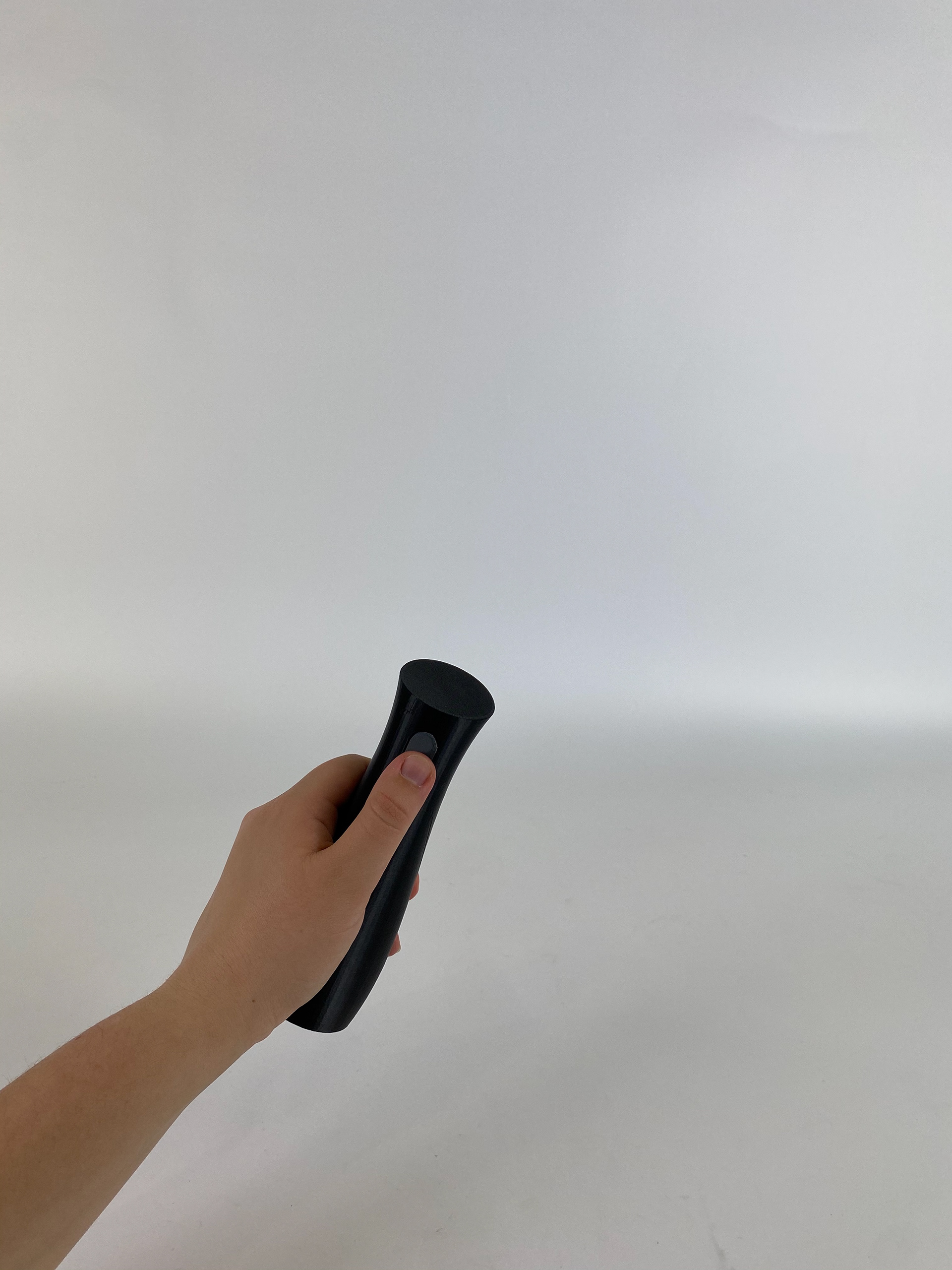
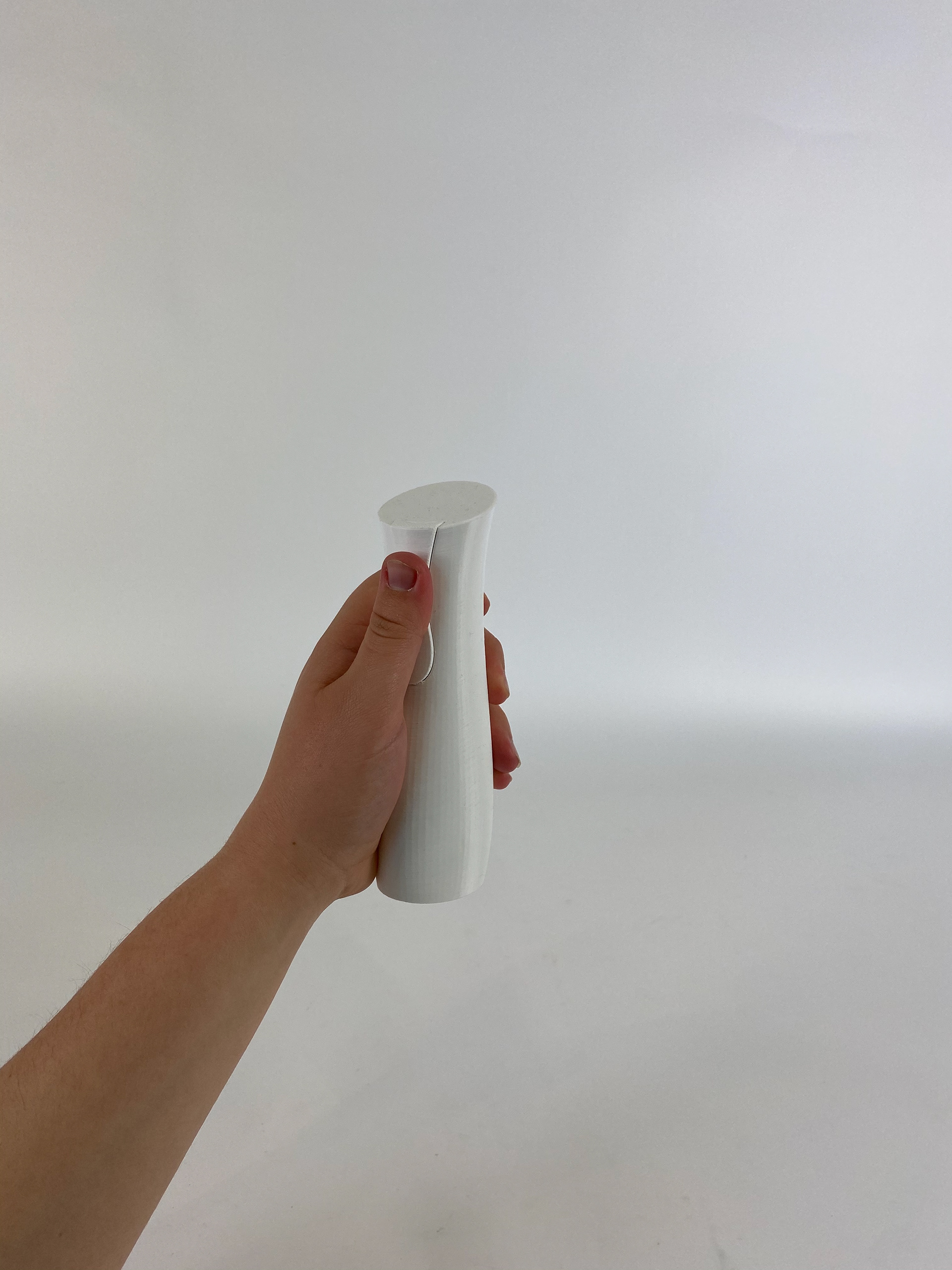

Limbic's feature set allows the user to better achieve different states of mind such as becoming more focused, better able to fall asleep, feeling more energised, feeling more calm or even helping increase/decrease a sense of appetite. The methods to achieve these states revolve around the practice of breathing but within different contexts such as yoga. The UX proposition provides users with access to guided activities based upon the user's known ability so as to consider flow state and not overwhelm the with too great a challenge and therefore invoke increased panic or anxiety. The use of colour within the accompanying app is purposeful in using colour coding to direct users to appropriate activities for the state of mind they would like to achieve according to the scents they have inserted into the physical product.
Limbic incites behavioural changes due to the use of multiple scents to enhance the practice of mindfulness breathing exercises to stimulate the human limbic system and amygdala. Evaluations with experts in cognitive neuroscience validated the product's feature set of combining scents, routines and mindfulness practices to alleviate symptoms of low mood. Users can use a shop feature within the app to purchase different scents and blends, such as peppermint & ginger, rosemary, lavender or even if so incline cbd oils . It would require users to select the state of mind they want to achieve with the product then recommending the most appropriate scents to help the user achieve this.
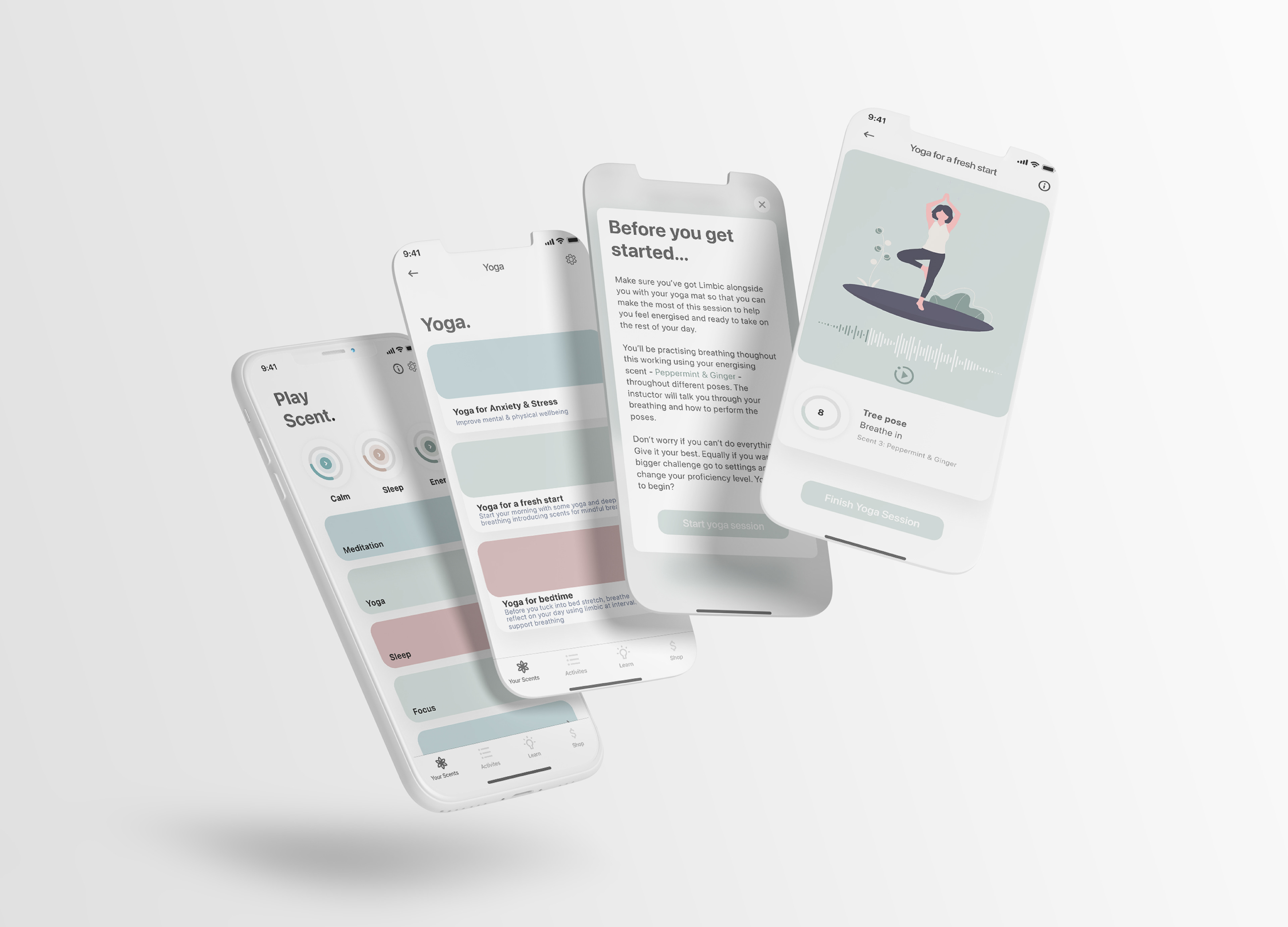
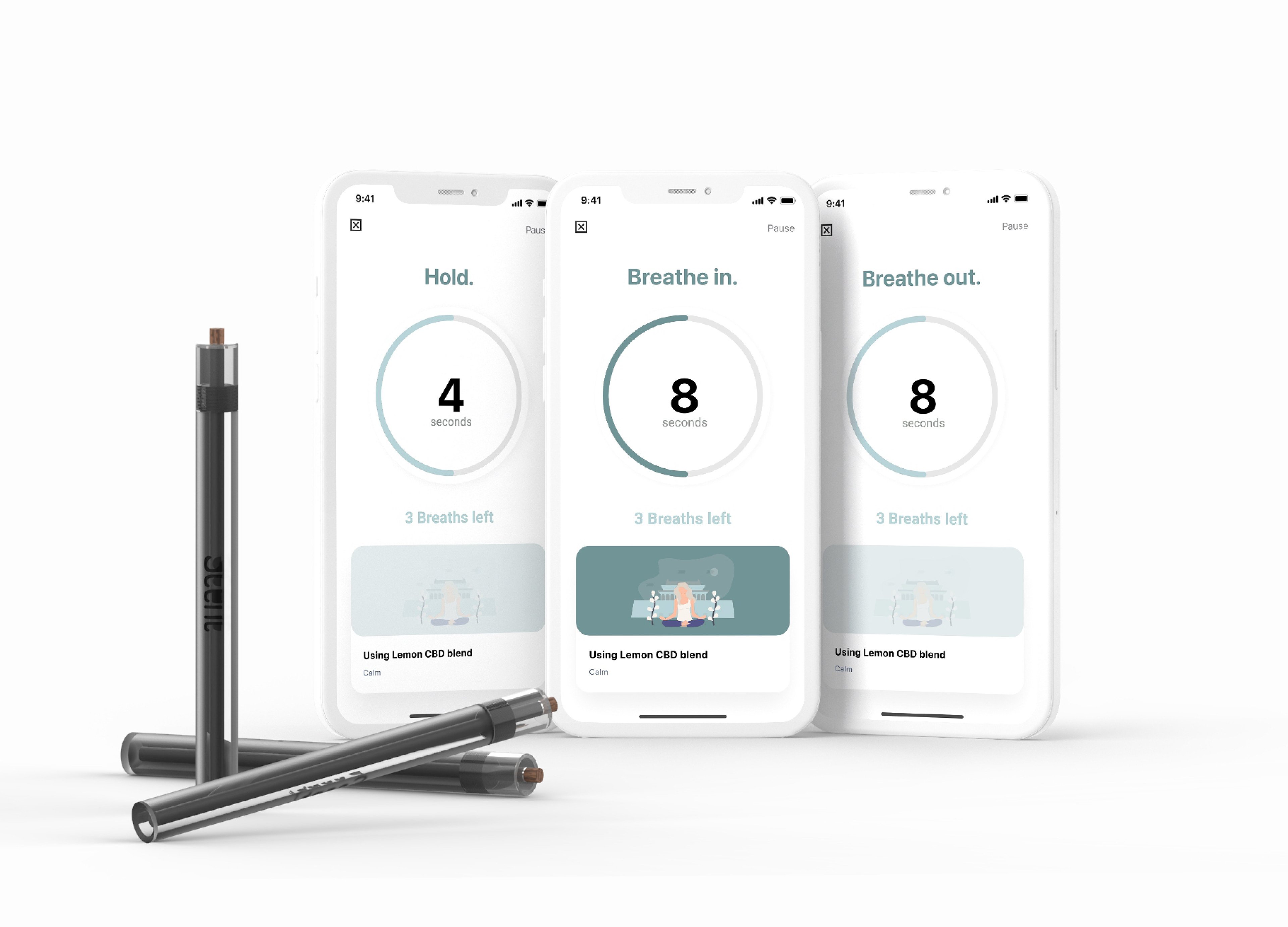
Limbic required minimalism in regard to the physical interaction points. Due to the product's aim of inciting behavioural changes I needed to ensure that the physical form didn't incite design friction and create further frustration in users. The main priority of the product is to assist in moments of poor mental health and therefore had to be cautious of designing other interaction points that could confuse or lead the user away from achieving their desired state. Therefore I purposefully limited the interaction points to create the SOS breathing sequence activated by the force sensing resistor so that the user can precisely activate that specific sequence each time they require.
Individual project where I was responsible was project management, deliverables, research, insights and innovation.



